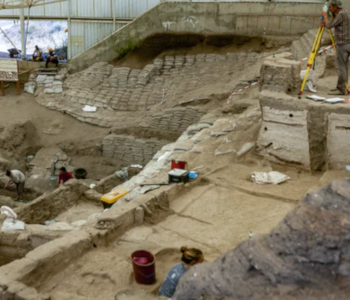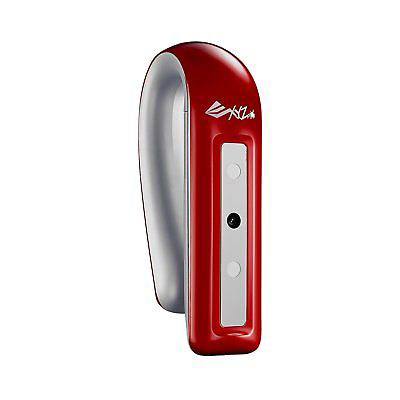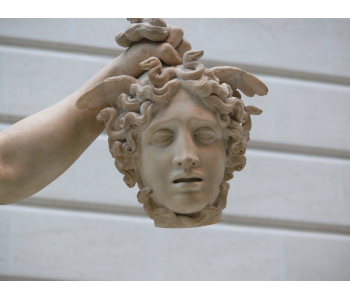How 3D Printing and Scanning Helps Archaeologists
Archaeology is a field of study that deals with artifacts of unparalleled historical significance. Oftentimes, these artifacts must also be handled with extreme caution. This limits how archaeologists can analyze these artifacts and make new discoveries about how relevant they are to ancient history.
To overcome these challenges, the field of archaeology has turned to the technology of 3D printing and 3D scanning. How exactly are these technologies used in archaeology and what advantages do they offer? Is it feasible for a 3D printing professional to work with a local archaeologist?
Dealing with sensitive artifacts

We’re narrowing down our discussion to the field of archaeology in this article to avoid levity. However, many of the challenges that archaeologists face are also encountered in similar fields such as paleontology and anthropology.
All these fields of study need to deal with ancient fossils and historical artifacts. The problem with these artifacts is that they can be easily damaged, even when handled with extreme caution. Even the mere act of touching an artifact with raw hands can cause damaging chemical reactions.
This fragile nature of artifacts makes it more difficult for archaeologists to study them in detail. These artifacts have to be measured and scrutinized in several different ways to infer information about their history.
An older technique is for archaeologists to make molds out of these artifacts to make copies of them. While this accomplishes the purpose of creating 1:1 models of artifacts, this technique still tends to result in rough handling of the artifacts. It’s also time-consuming and creates molds that only have a limited lifespan.
This highlights the need for a preservation method that is faster, more accurate, more permanent, and allows for gentler handling of artifacts. The combination of 3D scanning and 3D printing is uniquely appropriate to solve this problem.
Case studies
A high-profile example of 3D scanning being used to preserve and analyze an artifact is the case of the skeleton of Lucy, a pre-Homo sapiens hominid found in Ethiopia. While obviously an interesting artifact, the skeletal remains had already been damaged such that significant portions of it were missing.
To fill in the information gap, the skeletal remains were 3D scanned to develop a digital model. A digital reconstruction was then done by mirroring the parts of the skeleton that were still intact. Information from other fossilized remains was also used to complete the digital model. Through this method, damaged artifacts can still be completed, albeit only on a digital platform.
There have also been situations where 3D printing and modeling were combined with other technologies to preserve artifacts. In the case of mummies found in Egypt, an X-ray scan was done to reveal the appearance of the relatively well-preserved skeletal remains. These were then modeled in a 3D platform and printed, making them easier to study and exhibited. Through 3D printed models, people can appreciate the remains of a mummy without having to disturb the artifact itself.
At the University of Denver, 3D printing has become integrated completely into archaeology studies. Through the contributions from museums around the world, students can 3D print their own copies of ancient artifacts at the university’s Innovation Lab. A specific example of this application is a 3D printed copy of a Roman oil lamp which allowed students to infer details such as the type of oil used in the lamp and the gender of the person meant to carry it.
These are just some of the hundreds of examples of how 3D scanning and 3D printing have proven to be useful in archaeology. This is one field of study that has readily embraced this technology and all the benefits that it can offer.
The benefits of 3D printing and scanning in archaeology
What can 3D printing and scanning do for archaeology? Clearly, it’s doing something right. Here are some advantages of this technology that archaeologists have discovered through the years.
Digital preservation

The first thing that archaeologists often do is to make a digital copy of an artifact through 3D scanning. This can be done with a simple handheld scanner for small artifacts. This creates a digital copy, complete with accurate measurements and details, that will remain intact even when the artifact itself gets damaged.
The value of a digital model is that it can be infinitely measured, analyzed, and scaled up and down. This can reveal certain features of the model that would have been difficult to see in person. Taking exact measurements on a digital platform is also a lot easier than having to do it on an artifact that must be handled carefully.
Repairing damaged artifacts
Another interesting that archaeologists can do with digital models is that they can attempt to reconstruct them. In the case of a 3000-year old lion monument in Nimrud, Iraq, two students were able to recreate the artifact that had been damaged because of an attack in Baghdad.
The students used crowdsources images of the monument from before it was damaged to reconstruct the damaged sections. From there, a life-sized replica of the monument was 3D printed for viewing. The same digital model was also made available online so that visitors can virtually view the artifacts in glorious detail.
Reconstruction of large monuments
3D scanning isn’t just restricted to small artifacts. Through devices such as 360-degree cameras and drones, large monuments and even entire dig sites can be reconstructed into digital models. In some cases, archaeologists simply need to document a dig site because their operation has a time limitation.
This comes in handy not just in artifact preservation but also in the documentation of archaeological digs. Perhaps a dig can uncover an entire archaeological site that would have been very hard to properly document from the ground. The great thing about large-scale 3D scanning is that it’s a similarly established technology with well-defined workflows and cloud-based data processing support.
Virtual tours
3D models have proven to be a great way for museums to reach out to their audience, especially in the context of the recent pandemic. With 3D models, guests can virtually “visit” a museum through models of their artifacts. 3D models can even allow guests to get more up close and personal with artifacts than they would have if they had to see it through a secure glass box.
This increased accessibility can bring archaeology closer to the public. If this becomes more common, this might even encourage more people to go into archaeology.
Information exchange
Archaeology, of course, is still a field of study that thrives in collaboration and sharing of knowledge. Previously, there was no other way to document artifacts rather than with pictures, measurements, and data collected from scans. With 3D modeling, fully realized digital models can be shared between museums, educators, and colleagues.
Creating perfect copies

Avid museum-goers have probably aspired to take home copies of certain artifacts. With 3D scanning and printing, this is now possible. Some museums such as the Art Institute of Chicago have made licensed 3D models available for download so that visitors can just 3D print their own copies at home. This is a great idea in the case of art pieces with historical significance.
Better accessibility
Being “accessible” does not mean simply making museum pieces and artifacts visible to more people. In a more specific sense, creating 3D printed copies of artifacts makes it possible for museum visitors to experience artifacts in a more tactile manner. This means that visitors will be free to touch the pieces.
This is a huge deal, especially for people with vision problems. In 2015, the Prado Museum hosted an exhibition of 3D printed copies of relief paintings. Through this exhibit, visually impaired people were able to experience the masterpieces through the sense of touch.
Offering 3D printing and modeling services
If you have the skills and equipment for 3D scanning and printing, it won’t hurt to get in touch with a local museum and see how you can work with them. There are already a lot of these initiatives going on but there’s probably still a museum or archeologist out there who could use some help.
If there’s anything you should be wary about, it’s the fact that you will be working with artifacts of immeasurable value. Make sure to let an archaeologist or a representative of the museum do all the handling of the artifacts. The beauty of 3D scanning is that you don’t even need to make any physical contact with the objects you will be working with.
Final thoughts
Archaeology is an old field of study that seems to have been revitalized by the advent of 3D scanning and 3D printing. No longer are artifacts restricted to being viewed from a distance, lest they risk getting damaged. With a digital 3D model, these artifacts can be measured, analyzed, and appreciated in a completely safe environment.
3D printing and 3D scanning may also give museums a new way of reaching out to their audience. From tactile models for visually impaired visitors to downloadable 3D models of classical masterpieces, people now have more ways to appreciate historical artifacts.


